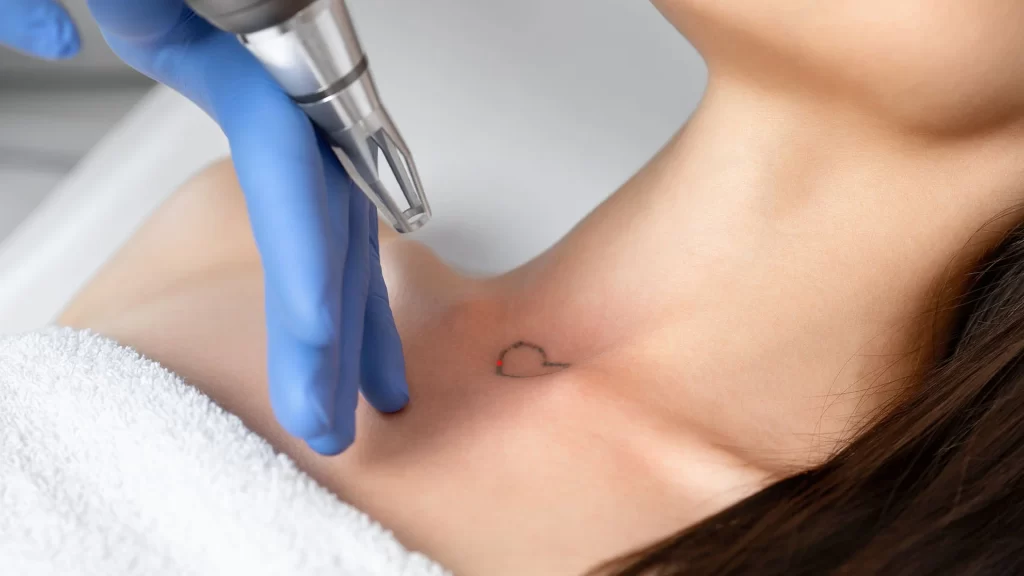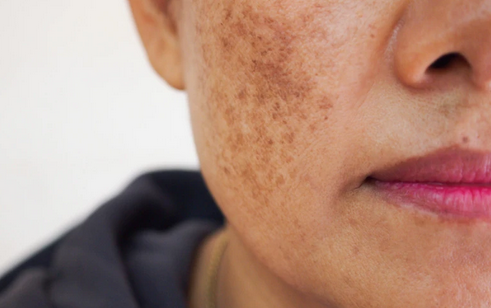Laser Tattoo Removal

faq
Cosmetic Tattoo Removal

Pre- , Post- instructions
For the next 24 hours: A cold compress and elevation are recommended to help reduce discomfort and inflammation.
Avoid for the next 24 hours: Physical activity, hot showers and saunas.
Apply for the next 3 days: Aquaphor, Bacitracin,or A&D Oinment with bandage. Any of these ointments will work. Change the dressing daily.
- After Day 5 begin applying Silagen Gel and Healing Balm.
Avoid for the next 1-2 weeks: Direct sun exposure, hot tubs, pool water and salt water until tattoo is healed. - Keep the treated area clean and dry while it is healing. Clean the area with antibacterial soap if needed and then pat the area dry. AVOID HIGH-PRESSURE WATER HITTING THE TREATED AREA.
- Some scabbing, blistering, light bleeding and itching may occur. Immediately after treatment, there may be erythema (redness) and edema (swelling) at the treatment site. This usually lasts 2 hours or longer. The erythema may last up to 10 days.
- Do not pop blisters. If you do blister, continue to apply one of the recommended ointments until the blister has popped naturally.
- Do not pick at the scab or allow the skin to become scraped, as this may result in infection and scarring. Shaving should be avoided in the treated area until it is completely healed.
- You may notice that blistering may occur in some treatments and not others. If blistering does not occur, it does not mean that your most recent treatment was less aggressive or your treatment is not working. Sometimes your body will react, while other times it will not. Regardless, the treatment is working.
- You may take only Tylenol to help with discomfort. Please avoid aspirins, ibuprofens and naproxen because they may increase the risk of bruising and/or bleeding.
- Shaving should be avoided in the treated area until it is completely healed (5-10 days).
- Please apply sunscreen everyday to the treated area after the tattoo has completely healed (5-10 days), even if clothing covers the treated area. Sun will travel through your shirt or pants. The use of sunscreen everyday on the area will also help the ink absorb and help with itching.
- No active tan, self-tanner, bronzers or spray tan 4-6 weeks before and after treatment.
- Massage the treated area 5-10 minutes daily after treated area has healed (5-10 days). Daily massage will help ink absorb.
- Remember, not all tattoos will clear 100%. Your tattoo may just fade.
- Remember: Drink lots of water.
- tattoo and/or microblading removal tool is used in a similar way as micropigmenting, with the same equipment
- tattoo extraction formula starts working almost immediately after drawing the original tattoo ink, moving upwardly through the skin
- scab containing tattoo ink is formed over the treated area in the next few days. As the skin is healing, even more unwanted tattoo ink gets drawn out
- the scab starts to peel off naturally, extracting the unwanted tattoo ink. You are likely to have a secondary scab containing even more tattoo ink
Nd Yag Laser Pigmentation Removal
The modern therapy against all pigments of the skin and moles, and the most effective solution for tattoo and permanent makeup removal.

Why Nd Yag laser?
It has been clinically proven that Q Switch Nd Yag laser is the most suitable laser on the market for the removal of both superficial and deep hyperpigmented lesions (pigments), birthmarks and sometimes dark circles.
Most patients only need one treatment and the results are dramatic. In contrast to the PhotoFacial treatment with IPL there is a slight irritation of the skin that usually lasts several days to weeks.
However, in some patients this slight irritation is harmless as the Nd YAG laser saves patients the inconvenience of repeated visits to the practice.
faq
Reduction or removal of pigment lesions (pigments) and brown moles, which can greatly improve self-confidence and self-esteem.
